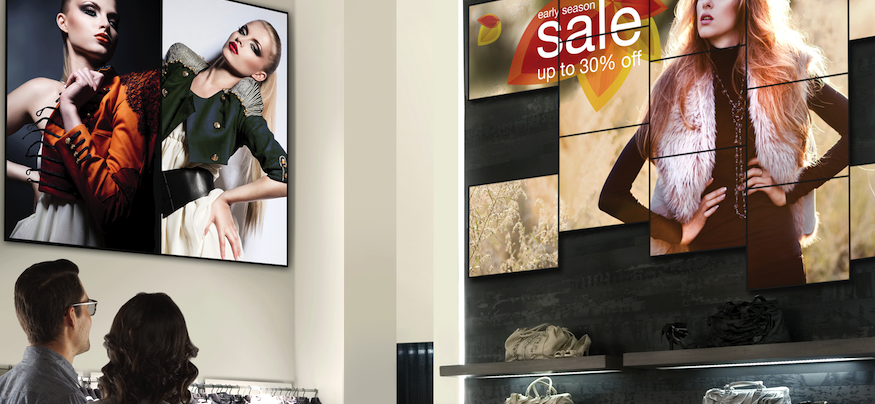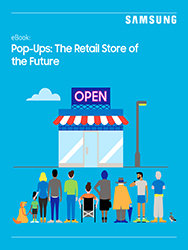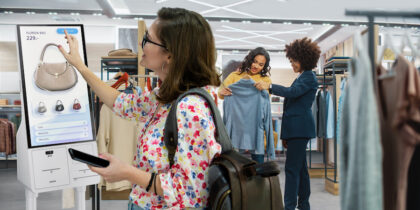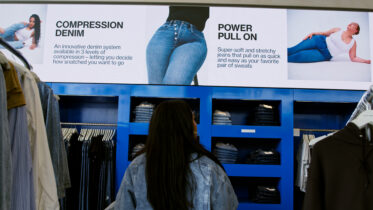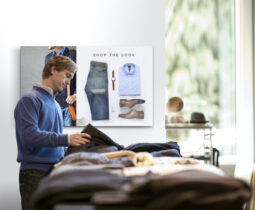While the concept has been around for more than a decade, store-within-a-store pop-up retail is growing as a model that can work well for both brands and retailers. Pop-up shops are gaining steam in many retail sub-sectors ranging from small, corner displays to 2,000 sq. ft. areas.
They’re especially popular in department stores, which are under growing pressure to make better use of their space, appeal to younger shoppers and enhance the customer experience. Many major brands including Target, Macy’s and Best Buy, now host branded pop-up stores right under their roof.
A Win-Win for Retail Environments
When executed well, a store-within-a-store can be a “win-win situation” for both the host and specialty retailer, Kevin Marschall, vice president of retail advisory and transaction services at CBRE Group, told Chain Store Age.
For the host retailer, a pop-up store offers an opportunity to enhance their in-store experience and attract customers who are eager to learn more about a particular product or brand. They can also create an element of exclusivity if shoppers aren’t able to find the featured products anywhere else.
In terms of tenant benefits, the pop-up store typically offers a better location than a standalone store and with low risk, low overhead and minimal startup costs. It can be a relatively easy and cost-effective way to gain access to prime real estate almost overnight, promote new products and experiment with marketing strategies.
Take Your Store to the Next Level
Discover how connected pop-ups can help you drive successful retail initiatives. Download Now
In 2016, JCPenney opened Sephora stores in 60 of its locations and announced it would have nearly 650 Sephora shops operating in its stores by the end of 2017. The cosmetic brand appeals to a younger demographic of shoppers who normally wouldn’t shop there, offering JCPenney “a great way to extend their customer base and drive more traffic to their stores,” Ken Morris, principal at Boston Retail Partners explained to Retail Touchpoints.
Brand Exposure and a Unique In-Store Experience
A store-within-a-store can work well in many retail sub-sectors, from electronics and apparel retailers to grocery stores. Finish Line and Sunglass Hut currently have in-store shops in many Macy’s locations and national grocer Kroger now has Murray’s Cheese stores in more than 350 of its locations.
The concept is popular with consumers because it offers them more in-depth access to brands in a familiar retail setting. Many successful pop-ups are tied to promotions, special events or new product launches. Others feature higher-end products, hot brands or services that can be used to generate buzz and expand offerings for shoppers.
Pop-ups can also be used to educate consumers and offer a better “try and buy” experience. Since 2013, the Samsung Experience Shop has operated in select Best Buy locations. It’s a designated part of the store that offers shoppers the opportunity to try the latest Galaxy devices, consult with experts and get personalized assistance with Samsung Skills Workshops.
This way, Best Buy gains the opportunity to let consumers try out technology, while Samsung gains the ability to prominently showcase their brand and products within the store.
Technology as the Key to Success
While a store-within-a-store can offer great benefits, implementation presents certain challenges. Brands and retailers must first find a mutually beneficial partnership and the right location, with a space that can work for both parties. In most cases, there should be a synergy between the brand and the retailer, with at least a little overlap in their markets.
The tenant should make the most of the allocated footprint. One of the best ways to optimize the space is to integrate smart, connected technologies to enhance the customer experience and provide real-time data.
Many successful pop-ups make use of digital displays and tablets to present custom and personalized content. They also use cameras, IoT-ready devices, heat mapping and data dashboards to learn more about their customers. Being able to obtain this data not only helps them improve the pop-up experience, but also other physical locations and brand marketing.
With Samsung Connected Spaces, brands can easily and affordably implement a fully connected store-within-a-store pop-up through a turnkey rental solution. Customizable kits include everything from displays, mobile POS systems, tablets and technology to set up and tear-down the space.
With connected technologies and more accessible retail space, today’s options are limitless. As retailers and brands push beyond the boundary of traditional retail to enhance the customer experience, smart pop-ups provide the perfect medium to increase engagement and build product buzz.
Looking for more cutting-edge retail solutions? Check out our full line of innovative retail technology.
